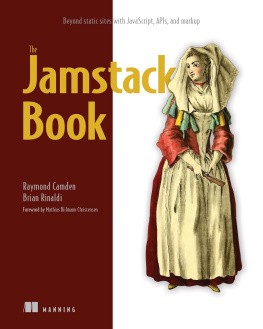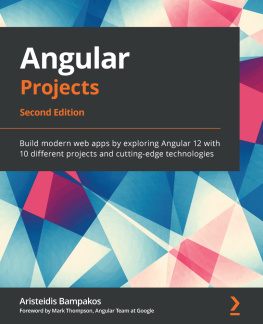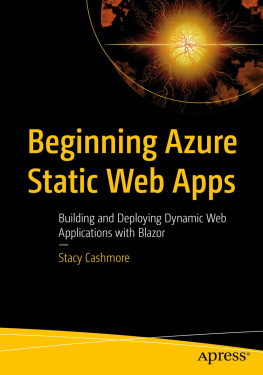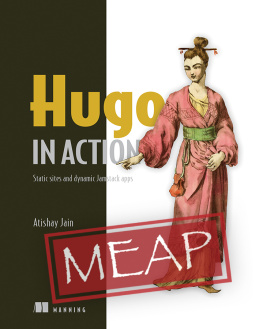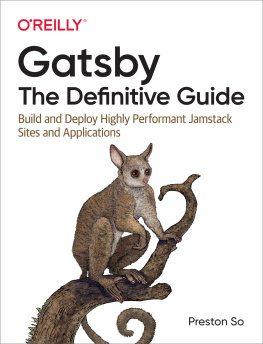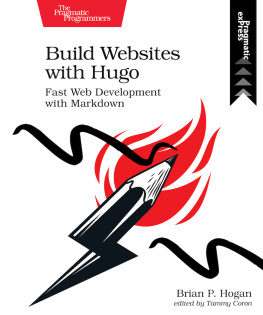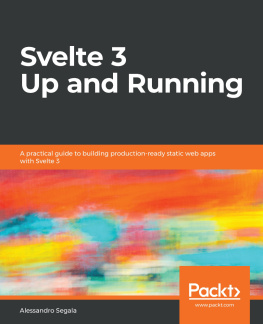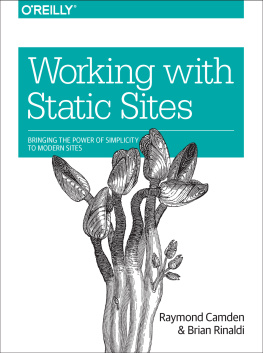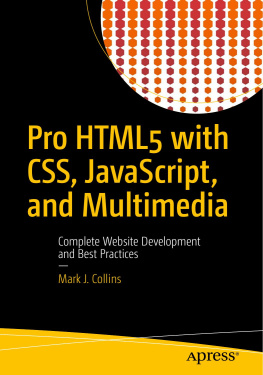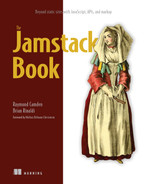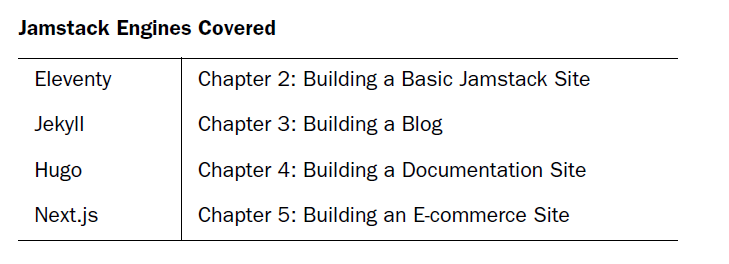To Lindy: You like to tell me to choose happyand I absolutely did when I chose you. I love you. Also, Laser says Utini!
To my wife, Claudia, and my sons, Luke and Sam, who love me, challenge me, and give my life meaning. I love you!
front matter
foreword
Its a great pleasure for me to write this foreword to Brian and Raymonds new book on the Jamstack. Both Brian and Raymond have been part of this dynamic movement thats changed the face of the modern web over the last 5 to 10 years.
I first met Brian at the start of 2015 when he was speaking about static site engines at the HTML 5 meetup in San Francisco. This was in the earliest days of Netlify, while the product was still in private beta, and before I had even coined the term Jamstack, at a time when just a few early adopters across the industry had started to believe that the web could be simpler, faster, safer, and better to develop with if we embraced the idea of decoupling the web UI from backend infrastructure and business logic.
It was meeting with and talking to these early adopters in different areas of our industry, like Brian, Raymond, and many others working on SaaS applications, headless CMSs, real-time web databases, interactive experiences on the web, and so on, that helped my cofounder and I build conviction that there was a broad, industry-wide change about to happen and that we needed a name for it and a nomenclature around it.
One night, in conversation with a friend, I came up with the term Jamstack and the restas they sayis history. We started circulating this term among the people we had connected with as well as the community that was already starting to form around Netlify at the timeBrian and Raymond among themand the term started spreading.
Today the Jamstack ecosystem is at an interesting point of potential and tension. On the one hand, theres no doubt that the Jamstack architecture has changed the modern web for the better: weve seen a groundswell of platforms, frameworks, APIs, web databases, content, and commerce platforms emerge and grow up around the category, and the web is a second-to-none platform to develop for today. On the other hand, some of the initial principles around simplicity and of prebaking a ready-to-serve frontend are being challenged by different approaches to on-demand edge-based rendering layers and hybrid build tools, where developers sometimes have to navigate different rendering models on a page-by-page basis.
Ive always known Brian and Raymond as curious minds always searching for simple and approachable tool chains that stay close to the fundamentals of the web. And this book is very much a practitioners guide to the Jamstack, where you can take a tour with these two experienced Jamstack developers through a selection of the different build tools and site generators youll encounter in todays Jamstack landscape, learn how to get productive, and make your own choices among different approaches for different projects.
The landscape of tools and frameworks will always be shifting and changing on the web, and no tool will ever be the right one for every problem you will encounter. Building a solid understanding of the strengths and tradeoffs that each tool brings, and developing a good instinct for how each tool feels, will help you better evaluate and navigate the rapidly evolving Jamstack ecosystem as existing frameworks change and innovate, and as new tool chains emerge.
Mathias Biilmann Christensen
CEO and cofounder, Netlify
preface
Both Brian and I have been fortunate to have been in the web development business for many years. Weve seen the good (evergreen browsers!), the bad (youll get those new features in a year or two!), and the even worse (tables for layout totally make sense). As developers with a bit of experience (and gray hair), we both were excited about the introduction of the Jamstack (or static sites, as it was originally called). In many ways, it was a modern take on building the web that we fell in love with at the start of our careersone based on simple files that we carefully handcrafted in text editors. But the Jamstack was also much more practical and sensible by making use of the best aspects of modern development frameworks and adopting modern best practices.
As proponents of the Jamstack, we both feel that theres no better time for developers to get involved. While the Jamstack has been around for a few years now, as a whole, its still very new, and the tools and technologies around it are just now becoming mature and gaining mainstream adoption. We both think that the Jamstack is a compelling framework for building websites thats likely to be useful for most developers. That being said, theres also a strong need for a book that introduces readers to the Jamstack while also giving them multiple examples of what can be built with it.

